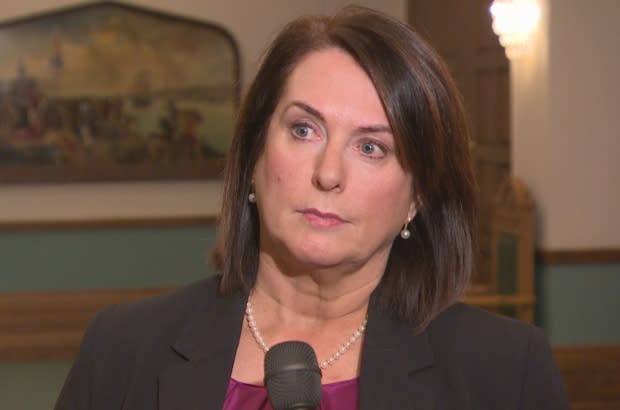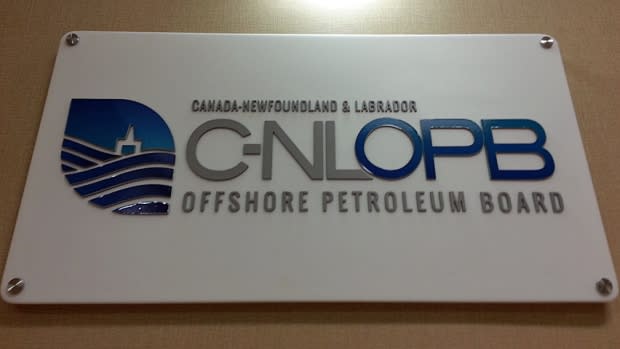After massive oil spill, spotlight shifts to agency regulating N.L. offshore industry
Newfoundland and Labrador's largest-ever offshore oil spill has raised a storm of questions about who has the power to turn oil production on and off in risky situations.
In the eye of that storm: the Canada-Newfoundland and Labrador Offshore Petroleum Board, a federal-provincial regulatory body that critics say defers to the wishes of offshore oil companies on numerous fronts, including what to do when sea conditions are as vicious as the weather that struck the area last week.
Provincial Natural Resources Minister Siobhan Coady said her department is investigating how the C-NLOPB handled the matter, and whether it has enough authority to tell oil companies what to do.
But Bob Cadigan, the former chief executive officer of the Newfoundland & Labrador Oil & Gas Industries Association (NOIA), said the provincial government needs to rethink its relationship with the C-NLOPB.
"They have a direct influence as owners, in effect, of the C-NLOPB," he said. "To distance themselves whenever there's an occurrence or an incident, to me, is disingenuous."
He added: "Any powers the boards need, government would be aware of."

Husky Energy estimates 250 cubic metres of 250,000 litres of oil leaked from a broken connector on a flowline that links the SeaRose floating platform to a drilling site at the White Rose field.
The spill happened as Husky was restarting oil production in 8.4-metre waves during the tail end of one of the most severe storms to pummel the province in years. Husky was the only operator in the offshore that tried to start up again so soon after the storm. The company didn't need a go-ahead from the C-NLOPB to hit the switch.
The federal and provincial legislation the board uses as a framework, like the Canada Petroleum Act and the Atlantic Accord, is "woefully outdated," he said, and neither the federal nor the provincial government has made it a priority to update them, despite the best efforts of groups like NOIA.
"Offshore safety, clarity in regulations is absolutely critical, and I'm just really surprised that hasn't received higher priority," he said.
Legislation is not clear
He said confusion around the board's authority often arises because the legislation isn't clear, and that complaints about the C-NLOPB's perceived lack of authority have been ringing out for years.
The C-NLOPB, he said, is the best possible body to be overseeing the province's offshore, given enough support from government.
"They're doing a good job despite outdated regulations that go back to the 1980s," he said.

Since last week, Coady has been fielding numerous questions about how the C-NLOPB has dealt with the SeaRose spill — and why Husky was allowed to restart production in heaving ocean conditions.
Coady said companies develop their own plans for bad weather and risky circumstances.
"They're supposed to follow the plan," she said.
"If the plan was followed and the protocol needs to changed, that will be something that obviously will come out of the investigation."
Coady, though, said oil companies must have a stake in stop-or-start decisions, so that they're responsible for the outcomes.
"I don't want to release them of that responsibility, so we have to be careful of what we're asking for," she said in the House of Assembly Tuesday.

She stressed that the C-NLOPB does have the right to pull companies' operating licences and pointed to the board's decision to suspend Husky's licence in January, after it decided not to suspend operation on the SeaRose when an iceberg got too close.
A CBC Investigation revealed Husky made that decision for financial reasons.
CBC's reporting also revealed that the C-NLOPB advised Husky on how to publicly frame its decision in a positive light.
Green light given to separate field
According to the C-NLOPB, it does step in. On Tuesday, the regulator tweeted that it had given the operators at the nearby Hebron field the green light to restart.

A spokesperson for the C-NLOPB told CBC News that companies are typically left to make their own decisions, but in some cases, the board will step in and make those decisions for them.
Because there had been a significant spill when Husky tried to restart, the C-NLOPB is now requiring all other operators to get permission to do the same, they said, including Husky.
The province was hit with the strongest storm in the world last week, and sea conditions remained hazardous on the day of the spill, according to C-NLOPB chief executive officer Scott Tessier.
Waves were recorded at 8.4 metres — about 28 feet — at the time the SeaRose tried to reconnect and start production.
"They were still rough," Tessier told CBC News in an interview Monday afternoon. "We'll investigate this incident thoroughly, and we'll see exactly what the thinking was by the operator in that case."
Read more articles from CBC Newfoundland and Labrador

